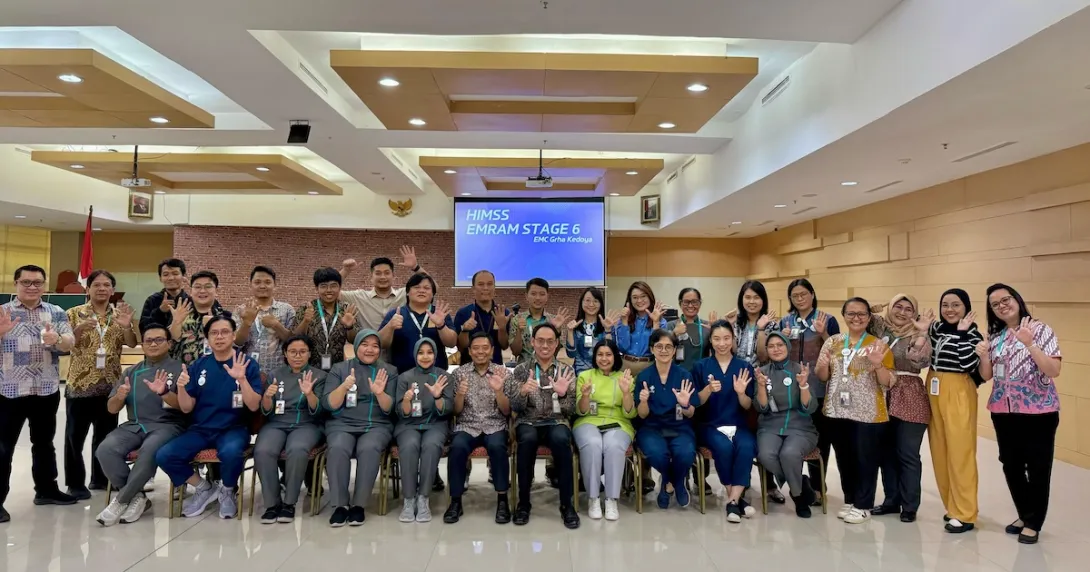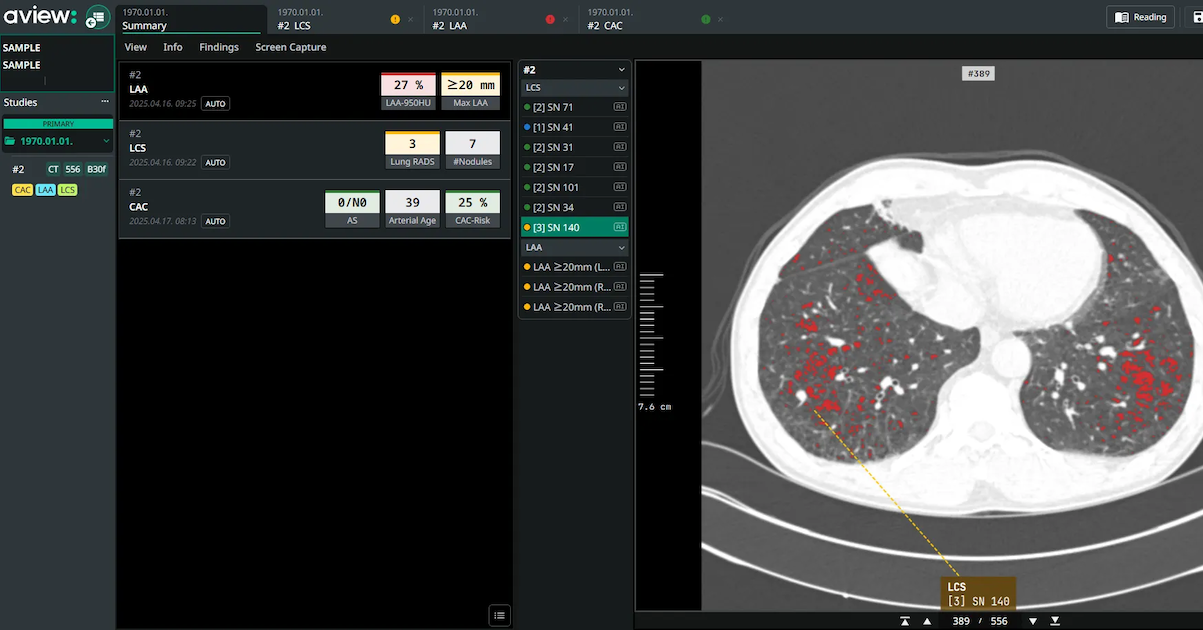
EMC Grha Kedoya Hospital in West Jakarta, Indonesia, has been validated for Stage 6 of the HIMSS Electronic Medical Record Adoption Model, which assesses an organisation’s maturity in EMR capabilities.
Established in 2011, the private 200-bed hospital is part of EMC Healthcare, a group of eight private hospitals in Indonesia. It sees over 120,000 patients yearly with a workforce consisting of approximately 169 doctors, 392 nursing and other health professionals, and 800 clinical and 238 non-medical staff.
WHY IT MATTERS
The recent global pandemic accelerated EMCGK's digital transformation, driven by an increased demand for teleconsultation and remote care, digital access to patients' medical records, and improved operational efficiency and data for decision-making. Data security issues, standardisation across EMC hospitals, and regulations – particularly related to systems interoperability – also necessitated this transformation.
In July 2023, EMCGK completed the implementation of a centralised HIS system across EMC Healthcare. The hospital then integrated IoMT and several other applications into the HIS.
To assess whether the hospital's digital adoption was on track, EMCGK reached out to HIMSS for assistance and guidance for further IT development and adoption.
In an interview with Healthcare IT News, Dr Henry Andrean, director of EMCGK, said their hospital chose to undergo the EMRAM assessment because of its reputation as an internationally recognised framework for assessing hospital digital maturity. The assessment’s clear structure also allows for easy monitoring and development of follow-up strategies.
The hospital took 13 months, starting from March last year, to prepare for the EMRAM validation. "To meet the Stage 6 EMRAM standards, we implemented a full EMR system that synchronised with other software and systems, creating a single, integrated system for front-line and back-office staff, clinicians, management and more. We also invested in technologies and infrastructure, strengthened data security and resilience, trained users and engaged them from the beginning of the implementation, and empowered patients to utilise the system for better care and output for themselves," he said.
The hospital also formed a cross-functional team of members from various departments to monitor and assess their progress.
During the assessment, HIMSS validators noted EMCGK's rapid progress in implementing its HIS. "In a short timeframe, the hospital has achieved impressive progress in system deployment and clinical adoption."
"The intuitive system design has contributed to strong, universal acceptance and adoption among users," they added.
Among the demonstrated features of its EMR system are the automated vital signs input and early warning system (EWS). "Now that the vital sign measurement device is connected to the EMR, EWS can be automatically calculated with a notification alert following an abnormal result, and nurses do not have to manually input the data into the system. This functionality is also applied in patient monitoring devices in the ICU," Dr Andrean mentioned.
A document management system was also developed, which digitised and stored paper records, as well as historical patient records from its old HIS.
Validators also commended the hospital's technical and operational resilience, having put robust backup systems and technologies and application layers in place to ensure system availability and reliability. "EMR data is also regularly backed up to local personal computers using the Code White Systems application, further strengthening data protection."
"HIMSS played a key role in providing a clear vision through gap analysis that helped us identify areas for improvement, especially in ensuring patient safety processes, measuring digital implementation benefits, and considering patient engagement in digital transformation. Concrete recommendations from HIMSS advisors helped us design a more effective digital strategy," said Dr Andrean.
THE LARGER TREND
EMCGK is the second hospital in Indonesia to get validated for Stage 6 EMRAM this year, after SMC Telogorejo Hospital. It is also the second hospital from West Jakarta to be validated for the EMRAM, after Pondok Indah Hospital – Puri Indah in 2022. Kasih Ibu Hospital Denpasar is another Indonesian hospital currently validated for the same digital maturity model.
The hospital is now preparing for a Stage 7 validation, with a focus on interoperability and leveraging AI to assist with clinical decision-making. It has also committed to investing more in data analytics to harness patient data and drive further operational efficiencies.
Meanwhile, the broader EMC Healthcare Group will continue standardising operations across hospitals.
ON THE RECORD
Since adopting the EMRAM standards, EMCGK noted several significant benefits. For one, the integration of the “EMCare” mobile application with its EMR system, which has provided access to health records, has empowered patients to become more involved in their care.
It also bolstered patient safety and improved outcomes. "Automated EWS calculation during assessment can help staff in measuring patient condition timely and accurately. Clear written texts in electronic prescriptions help pharmacists to accurately dispense medication. Scanning barcodes in patients' wristbands and the system before conducting any medical intervention ensures the right procedures for the right patients," Dr Andrean shared.
The standards also enabled more coordinated care, reduced administrative workload for staff and wait times for patients, and improved data security.
"HIMSS EMRAM Stage 6 at EMC Grha Kedoya Hospital is an important milestone in our digital transformation journey. This is proof of our commitment to providing integrated, safe, and data-driven healthcare services to improve the quality of service to patients."
Wildan A. Djohany, Director of IT, EMC Healthcare
"Achieving Stage 6 indicates that we have successfully adopted and integrated digital technologies significantly into the healthcare process. This has improved our ability to deliver services timelier, efficiently, and effectively. For EMC Healthcare, this achievement also brings a better reputation in the healthcare community and guides other EMC hospitals to transform their digital processes in a comprehensive and right way," said Dr Andrean.
"Digital transformation in healthcare is inevitable, and the need for this significantly grew when we faced COVID-19 in 2020. We acknowledge that HIMSS is the organisation that can lead and help us perform this transformation properly and reliably."
"We believe that digitising and digitalising healthcare will not only benefit the operation to become more efficient and effective, but will also improve the quality of our service, patient safety, clinical outcome and patient satisfaction eventually. We are committed to improving our system and technologies, becoming not just a digital hospital but a smart hospital. And partnering with HIMSS will help us to achieve that goal."
Dr Henry Andrean, Hospital Director, EMC Grha Kedoya Hospital
_
Dr Andrean's and Djohany's responses have been edited for brevity.



